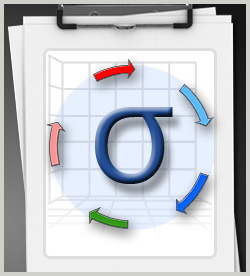KnowledgeCenters Six Sigma KnowledgeCenter Six Sigma Courses
Six Sigma teams concluding the Analyze phase of DMAIC with a well-understood problem, strive to generate a powerful solution in the Improve phase. Design of experiments (DOE) is a controlled approach to experimentation that enables teams to systematically change the level of one or more input factors and observe the effects on the targeted response. If teams exercise care in choosing the right design â including suitable factors, levels, and responses â their experiments can reveal the precise combination of factors that will optimize the response. Later, that combination will be tested, validated, and ultimately implemented to effect the desired process improvement.
This course surveys the concepts that are fundamental to design of experiments methodology. This course also explores the basic elements of experiments, principles of good experimental design, and strategies for designing experiments with desired power and resolution, and resource and time constraints. The focus is on the planning stage of DOE, when teams set experimental objectives, choose the best experimental design, and prepare to run the experiments. In describing these activities, the course explores the questions teams should consider at each stage of planning. This course is aligned with the ASQ Certified Six Sigma Black Belt certification exam and is designed to assist learners as part of their exam preparation. It builds on foundational knowledge that is taught in 's ASQ-aligned Green Belt curriculum.
This course surveys the concepts that are fundamental to design of experiments methodology. This course also explores the basic elements of experiments, principles of good experimental design, and strategies for designing experiments with desired power and resolution, and resource and time constraints. The focus is on the planning stage of DOE, when teams set experimental objectives, choose the best experimental design, and prepare to run the experiments. In describing these activities, the course explores the questions teams should consider at each stage of planning. This course is aligned with the ASQ Certified Six Sigma Black Belt certification exam and is designed to assist learners as part of their exam preparation. It builds on foundational knowledge that is taught in 's ASQ-aligned Green Belt curriculum.
| Objectives |
|---|
Terminology and Basic Design Principles
Planning Experiments
|


